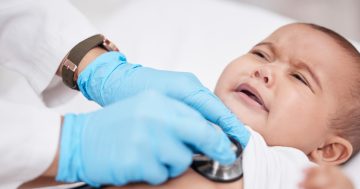
Rumours about unconfirmed COVID-19 cases concerning local health authorities. Photo: SNSW LHD Facebook.
As a further three positive cases of COVID-19 are identified in the Murrumbidgee Local Health District, and six more in the Southern NSW LHD, there has been a plea not to listen to rumour-mongering about the disease.
The new cases of COVID-19, located in Wagga Wagga and Greater Hume LGAs in southern NSW were confirmed yesterday, taking the MLHD total to 13. All cases notified were diagnosed after travelling overseas or being in contact with a confirmed case. All patients have experienced mild to moderate symptoms and are in self-isolation, being managed at home.
The number of confirmed cases of COVID-19 in the Southern NSW LHD has now risen to 18. There are now five confirmed positive results in the Bega Valley and three in the Eurobodalla. Four cases have been identified in Goulburn Mulwarree, including one ACT resident who is self-isolating in the Shire. There are three cases in Palerang Shire and two in Queanbeyan.
Amid the coronavirus pandemic there has been a lot of talk in a lot of regional country towns that has led to rumours of unverified reported cases.
The Murrumbidgee Local Health District has taken unusual steps to quell the whispers by issuing a media release asking residents to desist from spreading misinformation.
“Spreading misinformation about COVID-19 is dangerous and only the facts should be told,” according to Young District Hospital facility manager Belinda Downey.
According to the MLHD, the rumour-mongering is not confined to Young, but other towns scattered throughout the MLHD.
To date, there have been no confirmed positive cases of COVID-19 in the Hilltops Council area.
Ms Downey said that Young District Hospital is well prepared to care for people who may be diagnosed with COVID-19.
“People with mild to moderate symptoms can be managed at home with the support of their GP and Murrumbidgee Local Health District’s virtual health services,” she said.
“Those who are more unwell may be admitted to an appropriate local hospital,” she added, “our base hospitals are equipped to support people with severe COVID-19 symptoms”.
Mrs Downey said Young District Hospital had plans in place for the treatment and care of anyone who may have contracted the virus and needs to be admitted to the hospital.
“An isolation area has been identified and we are well supported on the ground by teams of infection control personnel,” she said.
“District speciality infection control nurses are out and about in our hospital providing support to front-line staff to maximise the safety of our healthcare workers and the community,” Mrs Downey added.
When notified of a positive test result for COVID-19, Public Health Units commence close contact tracing. A close contact is defined as someone who has been face-to-face for at least 15 minutes or been in the same closed space for at least two hours, as someone who has tested positive for COVID-19 when that person was infectious.
Where individuals are identified as close contacts, they must isolate themselves for 14 days after they were last in contact with the confirmed case. A daily check-up process is set up to monitor their health via SMS.
If not all contacts can be identified after a person has spent time in a particular location an alert would be issued to warn people who may have been in that location at the same time as the case.
The time between when a person is exposed to the virus and when symptoms first appear is typically five to six days, although may range from two to 14 days. For this reason, people who are identified as close contacts are asked to self-isolate for 14 days.
COVID-19 testing clinics are operating in Griffith and Wagga Wagga in the MLHD and Bega, Cooma, Goulburn, Queanbeyan and Cooma in the Southern NSW LHD with more clinics to be opened across the region in coming weeks.
Members of the public who need information can visit the NSW Health website









